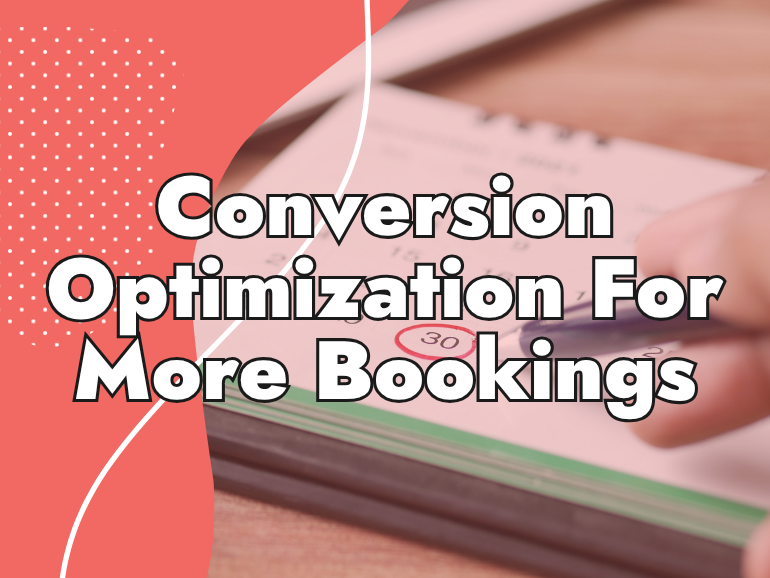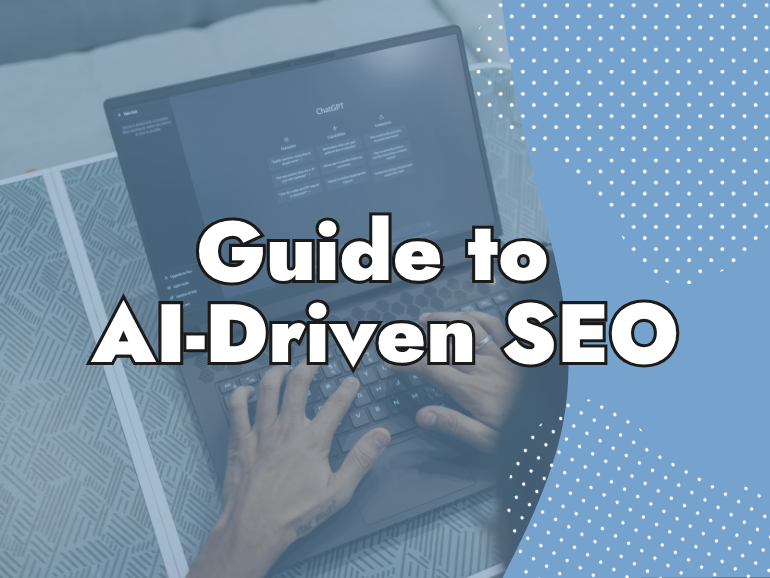Keyword Research For SEO In 2019 – How To Do It And How It Has Changed
Updating Your Keyword Strategy Keyword research for SEO is as crucial in 2019 as it has ever been. If not more so. As we explained in our recent blog post ‘How to Choose the Right Keywords for Your Blog Posts’, the world of keywords has changed. Keyword strategies for SEO used to be as easy…
Written by Keiran Griffiths
Last updated February 27, 2025 • First published October 23, 2019

Updating Your Keyword Strategy
Keyword research for SEO is as crucial in 2019 as it has ever been. If not more so.
As we explained in our recent blog post ‘How to Choose the Right Keywords for Your Blog Posts’, the world of keywords has changed. Keyword strategies for SEO used to be as easy as targeting a bunch of keywords you wanted to rank for then stuffing them into your content willy nilly. No more. In fact, that strategy is almost ancient history at this point. Between then and now, Google has undergone a myriad tiny – and a handful of titanic – algorithm changes, all of which affect how you use keywords for SEO purposes. (We’ll dive into more details on those changes below.)
In a direct correlation, keyword research, the way you find those keywords, has changed. Changed and, if anything, become more important. Without proper keyword research, tailored to not only your own content and business but to the caprices of search engines, you’re just flinging keywords into a void, the ever-changing, ever-updating algorithm-powered black hole that search can become if you’re not meeting its demands.
To meet those demands, read on to find out how keyword research for SEO has changed for 2019, and how to research properly, for right now.
What is keyword research?
Quite simply, keyword research for SEO is the practice of finding and analyzing the words and phrases people use to search for information on the Internet. Then utilizing that knowledge to optimize your content online using the best possible keywords to get you found on the internet. Find keywords. Analyze keywords. Use keywords. Remember those three phrases. They form the very core of your keyword research plan.
Why is research so important?
75% of Internet users never scroll past the first page of search results. Enough said.
Need it spelled out for you? If you’re not on the first page of search results, you’re practically invisible.
LIKE WHAT YOU’RE READING?
If these articles are helpful,
imagine what our team
can do for you!


More Traffic. Leads. Business.
I want to show you how SEO can grow your business in ways you haven’t seen before.
More Traffic. Leads. Growth.

I want to show you how SEO can grow your business in ways you haven’t seen before.
How do you get to the first page of search results? A selection of strong, relevant keywords. How do you find strong, relevant keywords? Yep, you guessed it: keyword research.
Keyword research for SEO gives you the data to move forward confidently into each new day, each new search, each new algorithm update. Because no matter how often Google’s algorithm evolves, changes, bamboozles, the goal is always the same:
- To give the searcher exactly what they are searching for.
- To provide value to the searcher.
- To meet user demand.
- To answer user questions.
- To satisfy user intent.
Keyword research allows you to do all those things. And by giving your audience exactly what they are looking for, you are giving search engines what they are looking for. The reward? Great rankings ↠ SEO wins ↠ Improved traffic ↠ Better bottom line.
How keyword research has changed for 2019
How has keyword research changed for 2019? The short answer: Keyword research has changed because Google has changed.
The long answer?
Google (and their cohorts) have gotten smarter. More focused on user intent. Keyword research for SEO must follow suit.
Google continues to strive to improve the user experience at every search, and in their effort to spit out the most relevant results for each and every search, results that perfectly match the searcher’s intent, they have gotten smarter. To do this, over the last few years they’ve hit us with the following algorithm updates (amongst others):
Google Panda (2011) – penalized thin, low-quality content and duplicate text
- Google Penguin (2012) – targeted link spam and manipulative link building
- Google Hummingbird (2013) – improved semantic search and focused on search intent (see our post on Hummingbird SEO)
- Google Rankbrain (2015) – started using machine learning to understand how users interact with organic search results and understand the search intent behind each query
- Google Maccabees (2018) – improved the relevancy of search queries
All core algorithm updates which have had a major impact on SEO strategies and keyword research. Updates which sought to improve the quality of online content, banish dodgy link building practices, improve the relevancy of search queries, measure and improve user satisfaction. But do you see the common theme here? All these updates, and no doubt all future updates, are geared towards one thing: an improved user experience. Google wants its customers – your audience – to find exactly what they searched for.
Which, really, is exactly what you should want too. By updating how you do keyword research, it’s also something you can achieve. Here’s how.
How to do it right, for right now
Instead of trying to keep up with Google and its thousands of annual algorithm changes to search (yes, thousands: in 2018, Google reported 3,234 updates, an average of almost 9 per day!), the key to effective keyword research in 2019 is to go on your own search journey. Search for keywords that really and truly work for your niche, your industry, your business, and your customer.
This will not only circumvent the need to update your own keyword strategy with every new update – an exhausting thought which is enough to blacken the soul of any SEO, no matter how passionate, but will ensure that your keywords are always relevant and rankable.
3-Step Keyword Research Process
Your keyword research for SEO for 2019 involves common sense applied to your unique situation and a fairly simple 3-step approach.
- Find keywords.
- Analyze keywords.
- Use keywords.
Step 1: Find Keywords
We’ve already covered how to find the right keywords for your blog pretty extensively here. This can be applied to any of your online content.
- Read the blog.
- Use common sense – what keywords are a natural fit for your brand or business, or the topic at hand?
- Always, always put user intent at top of mind: when researching and choosing keywords to create content around, ask yourself: What is the user searching for (in relation to your industry/niche/topic), and can I fulfill that intent?
- As a reminder, the four categories of searcher intent are:
- Navigational intent – users search for a particular website.
- Informational intent – users search for the answer to a question.
- Investigational or commercial intent – users search for information that may lead to a transaction.
- Transactional intent – users search with the intention of actually buying something.
- As a reminder, the four categories of searcher intent are:
-
- Once you know what that intent is, and how your business can fulfill that intent, you can create content containing relevant, intentional keywords to drive users there. To find those intent-driven keywords…
- Use the many, many keyword research tools available. (AnswerthePublic.com is a favourite.)
- Use Google. Go to the source to see what other people are asking in search in relation to your industry and the user intent you’ve already established. Google offers three easy ways to see what others are searching for as soon as you type a query into the search bar:
- In an uncanny Google guessing game, ‘Google Suggest’ lists suggestions as you’re typing;
- ‘Searches related to [insert your search term here]’ will pop up at the bottom of Google’s SERP once you’ve finished typing your initial query, showcasing other often-searched keyword terms and phrases related to your query; and
- Google’s ‘People also ask’ section offers a series of long-tail keyword phrases that, well, people also ask a lot on Google. Google has led you to the water, it’s up to you to drink from it.
- For more data-driven keyword ideas, try Google Keyword Planner on for size. This powerful tool from the source of all search itself provides you with a ton of keyword ideas. Enter an idea into Keyword Planner, and be amazed by the more than 800 Google-relevant suggestions. (It is also a powerful tool to pull out in ‘Step 2: Analyze Keywords’ below, letting you evaluate monthly global and local search volumes for keywords, competition levels, and more.)
- Use your creativity when conducting keyword research for SEO. Try find relevant, valuable keywords that others may not have thought of. Soovle is a great tool for this. Type your keyword or query into their search bar and they’ll come up with a list of suggested keyword ideas from Google, Wikipedia, YouTube, Amazon, Bing, Yahoo and Answers.com – all on one easy-to-read screen.
- Use your current keywords that are already working for you. You can find out which keywords your website is already getting found, and ranked, for. Your Google Analytics account is a good place for this information. Google Console’s Performance Report can also help here by revealing the pages on your site that get the most clicks from search queries – and the keywords that brought them there.
Step 2: Analyze Keywords
Once you’ve got your list of possible relevant, user-intent-friendly keywords you need to narrow them down to find those that will actually work for you in search engine land. To do this, you can turn to data and analytics.
- Check out your competition: Head on over to your competitors’ websites to see what keywords they’ve targeted and whether those make sense for your business. Ahrefs Keyword Rank Checker tool can come in handy here.
- Check search volume, clicks and traffic potential: Review search volume, clicks, and traffic potential of a potential keyword phrase to see how well it might work for you. The free Moz Keyword Explorer tool makes this much easier than you think it might be. Don’t forget to use the power of Google here too – see above note about Google Keyword Planner.
- Check difficulty: Explore how hard it will be to rank for a certain keyword – the higher the keyword difficulty, the harder it will be for your website to rank for the keyword. The SEMRush Keyword Difficulty tool allows you to find keywords with less competition and estimate keyword difficulty instantly.
Step 3: Use Keywords
You’ve done the research, analyzed the data, made your choice. And the winner is…
Now that you have your focus keyword for a particular piece of content, blog, or website page, it’s time to bite the bullet and use said keyword, or keyword phrase. Some best practices include:
- Use it, don’t abuse it. Never overuse your chosen keyword. Start with a few key places – like the page title, meta description, at least one sub-header, and the first paragraph of your content. Then stop! Read more about where and how to use your keywords in your content here.
- Use various LSI – Latent Semantic Indexing – keywords. Latent what now? LSI is really just the techie term for the search engine equivalent of the thesaurus, referring to a specific mathematical method used by search engines to identify which keywords are semantically related. In other words: search engines will recognize synonyms of your focus keyword. Use them throughout your text wherever they fit naturally.
- Use modifiers to make your root keyword more unique and drive higher search volume specific to your area of expertise and your actual physical area. Modifiers, phrases attached to the beginning or end of your root keyword, are key to local search success. For example, if your root keyword is ‘autobody shop’, then a modifier would be ‘in Vancouver’.
- Use your head. In the SEO version of dance like nobody’s watching, write your content as if Google isn’t watching. If you write about what you know – your business, for the people you want to know – your customers, more often than not you’ll find that your keywords will find their natural, organic fit in your text without you even knowing you put them there.
This really just scrapes the surface of keyword research for SEO. It continues to be an evolving, living, breathing beast, the beating heart of SEO. And while there are hundreds of keyword research tools online to help you tame the beast, it continues to overwhelm with its breadth, depth and magnitude. Which is why if you still need help with your keyword research for SEO for 2019, you are not alone! 1st on the List can help: call 1-877-563-0459 or email us at [email protected].
Keiran Griffiths
Keiran Griffiths is the President & Managing Director at 1st on the List. He works exclusively out of the Abbotsford head office and has extensive experience helping small and big brands grow their business. His background is in restaurant and hospitality management as well as business development (he started his own property management company in 2014). Up for any challenge, Keiran works with clients to assess their budget and investment capabilities and come up with a marketing solution that will earn them the biggest bang for their buck.
Don’t miss out – get newest posts straight to your inbox!
OTHER ARTICLES WE THINK YOU’LL ENJOY
Partner With Us. Get More Leads.
Stop trying to do it all on your own – reach out to our team and we can discuss marketing strategies that are best suited for your business!
[NO HASSLE, NO PRESSURE, NO WORRIES – JUST MEANINGFUL INSIGHTS]








